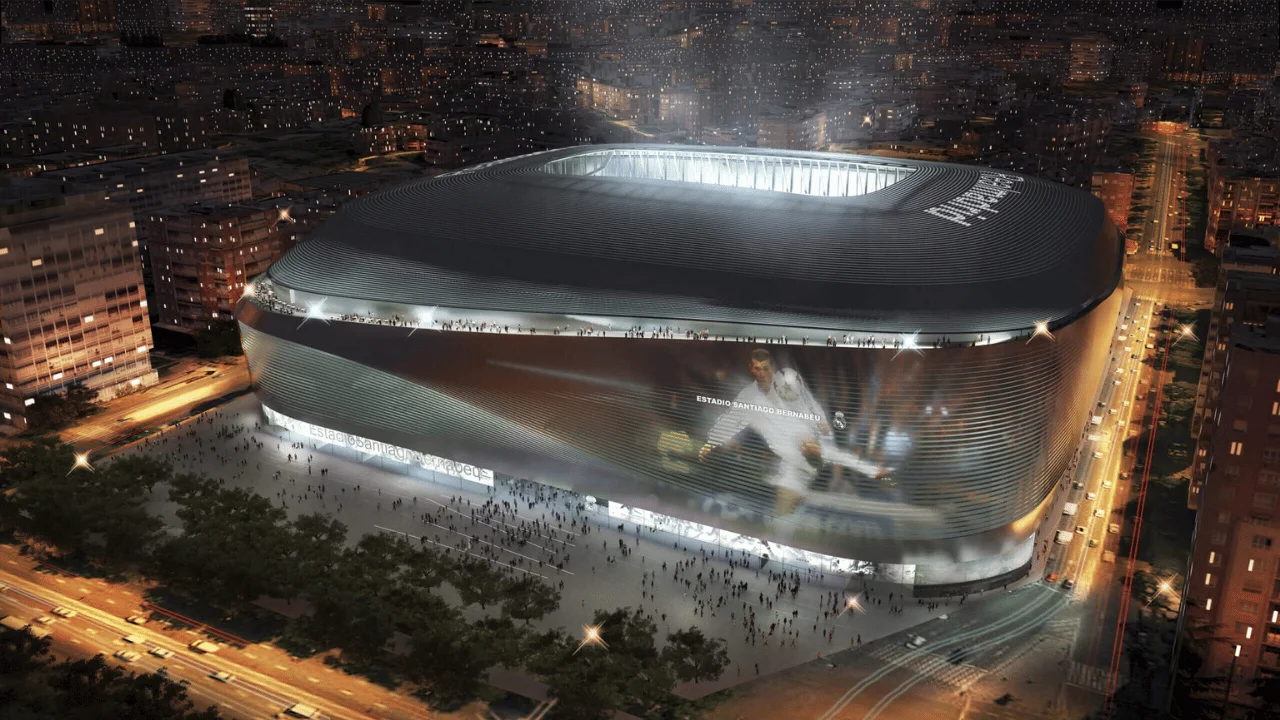The History of Real Madrid’s Famous Santiago Bernabéu Stadium: From Construction to Renovation

Real Madrid’s Santiago Bernabéu Stadium is not just a football ground; it’s a global icon. Nestled in the heart of Madrid, this stadium has witnessed some of the most unforgettable moments in football history, from thrilling Champions League matches to legendary El Clásico clashes. As the home of one of the most successful football clubs in history, the Santiago Bernabéu is a symbol of Real Madrid’s grandeur and ambition. In this article, we will delve into the rich history of this iconic stadium, from its construction to its current renovation, while exploring its impact on football, the club, and the city of Madrid.
Table of Contents
Construction of the Santiago Bernabéu: A Visionary Beginning
- Early Beginnings and Need for Expansion Before the construction of the Santiago Bernabéu Stadium, Real Madrid played at a smaller venue known as Estadio Chamartín, which could only hold around 22,500 spectators. As the club’s popularity grew in the early 1940s, it became clear that a larger, more modern stadium was necessary to accommodate the increasing number of fans. Under the leadership of club president Santiago Bernabéu, a visionary plan was set in motion to build a stadium that would match Real Madrid’s growing ambitions and global reputation.
- Breaking Ground and the Grand Opening Construction of the stadium began in 1944, and the ambitious project was designed to hold a capacity of 75,145 spectators, making it one of the largest stadiums in Europe at the time. The stadium was inaugurated on December 14, 1947, with a match between Real Madrid and the Portuguese side Os Belenenses, which Real Madrid won 3-1. At its inauguration, the stadium was initially named Nuevo Estadio Chamartín, but it was later renamed Santiago Bernabéu in honor of the man who spearheaded its construction.
- An Architectural Marvel of Its Time When it was first built, the Santiago Bernabéu was considered a state-of-the-art facility. The stadium’s architecture featured a unique elliptical design, providing unobstructed views for all spectators. The stands were built to bring fans closer to the pitch, creating a powerful atmosphere that has been integral to Real Madrid’s home advantage over the decades. The use of reinforced concrete allowed for the construction of towering stands, setting the stadium apart from others in Spain.
Renovations and Expansions: Constantly Evolving with the Times
While the Santiago Bernabéu has always been a grand stadium, it has undergone several renovations and expansions over the decades to maintain its status as one of the premier football venues in the world.
- 1954 Expansion: Increasing Capacity In 1954, just seven years after its inauguration, the stadium was expanded to meet the growing demand from Real Madrid’s fanbase. The upper tiers were extended, increasing the stadium’s capacity to an impressive 125,000 spectators. This expansion further cemented the Santiago Bernabéu’s place among the largest football stadiums in the world.
- 1982 World Cup Renovation The 1982 FIFA World Cup marked another significant chapter in the stadium’s history. Spain was chosen to host the World Cup, and the Santiago Bernabéu was selected as one of the key venues. To meet the tournament’s requirements, the stadium underwent major renovations. New seating areas were installed, reducing the capacity to around 90,000 but improving comfort and accessibility for fans. A new roof was also added, covering a portion of the seating areas and modernizing the overall look of the stadium.
- 1990s Modernization The 1990s saw further modernization efforts aimed at improving safety and comfort. The capacity was reduced once again, this time to around 75,000, as more seating areas were converted into all-seater sections in line with modern safety regulations. These changes allowed the Santiago Bernabéu to meet the evolving standards of UEFA and FIFA, ensuring that it remained a prime venue for international competitions.
Recent Renovations: Building the Stadium of the Future
- The 2020 Renovation Project: A New Era In 2019, Real Madrid announced a massive renovation project aimed at transforming the Santiago Bernabéu into a futuristic, multi-functional venue. The renovation, which began in early 2020, is estimated to cost over €575 million and aims to position the Santiago Bernabéu as one of the most advanced stadiums in the world. The project includes various technological upgrades, improved fan experiences, and the addition of new features that will make the stadium more versatile.
- Technological Enhancements One of the standout features of the new renovation is the installation of a retractable roof, allowing matches to be played regardless of weather conditions. In addition, a state-of-the-art 360-degree LED screen will be installed around the stadium’s perimeter, providing fans with a more immersive matchday experience. The new design also incorporates the use of smart technology, enabling fans to access the stadium through their mobile devices and making it easier to navigate facilities inside the stadium.
- Expanding Functionality The renovation of the Santiago Bernabéu is not just about football. Real Madrid’s vision is to create a multi-purpose venue that can host concerts, corporate events, and other sporting competitions. This will make the stadium an important cultural and economic hub for the city of Madrid. With these upgrades, the Santiago Bernabéu is set to become a 21st-century stadium that can generate revenue year-round, not just on matchdays.
- Sustainability and Environmental Consciousness Sustainability is a key aspect of the new renovation. The stadium will be equipped with solar panels and a geothermal heating system, significantly reducing its environmental footprint. The renovation also includes the installation of a rainwater collection system, which will be used for maintaining the stadium’s pitch and other facilities. This focus on sustainability ensures that the Santiago Bernabéu remains a leader in stadium innovation for years to come.
Cultural Significance: The Heart of Real Madrid’s Identity
- Home to Legendary Moments The Santiago Bernabéu has been the stage for some of the greatest moments in football history. From Real Madrid’s legendary 14 Champions League titles to unforgettable El Clásico matches against FC Barcelona, the stadium has witnessed countless moments that have shaped the club’s legacy. For Real Madrid fans, the stadium is more than just a venue; it’s a symbol of the club’s spirit, determination, and success.
- Impact on Madrid’s Economy and Tourism Beyond football, the Santiago Bernabéu is a major tourist attraction, drawing millions of visitors from around the world. The stadium tour, which takes fans behind the scenes, has become a must-see experience for any football enthusiast visiting Madrid. The stadium’s role as a cultural landmark boosts the local economy, contributing to tourism and creating jobs in the surrounding area.
- A Spiritual Home for Real Madrid Fans For Madridistas, the Santiago Bernabéu is their spiritual home. The passion and energy inside the stadium on matchdays are unmatched, with fans creating an electric atmosphere that has spurred the team to countless victories. The famous “White Wall” of supporters in the stands embodies the unity and pride of the Real Madrid fanbase, making the stadium one of the most intimidating venues for visiting teams.
Conclusion: The Future of the Santiago Bernabéu
As the Santiago Bernabéu undergoes its most ambitious renovation yet, its place as one of the world’s most iconic football stadiums is set to be cemented for future generations. Real Madrid’s commitment to maintaining and modernizing the stadium reflects its ambition to remain at the forefront of global football. Whether it’s through technological innovations, sustainability efforts, or expanding its functionality, the new Santiago Bernabéu will continue to be a landmark in the footballing world.
With a rich history of hosting legendary matches and a bright future ahead, the Santiago Bernabéu remains a symbol of Real Madrid’s success and ambition. As the club prepares for its next era, one thing is certain: the Santiago Bernabéu will continue to be the beating heart of Real Madrid, driving the team forward in its pursuit of even more glory.






